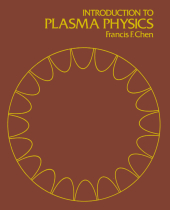 Neuerscheinungen 2012Stand: 2020-01-07 |
Schnellsuche
ISBN/Stichwort/Autor
|
Herderstraße 10
10625 Berlin
Tel.: 030 315 714 16
Fax 030 315 714 14
info@buchspektrum.de |

Francis F. Chen
Introduction to Plasma Physics
1974. 2012. xii, 330 S. 51 SW-Abb. 235 mm
Verlag/Jahr: SPRINGER, BERLIN 2012
ISBN: 1-475-70461-5 (1475704615)
Neue ISBN: 978-1-475-70461-7 (9781475704617)
Preis und Lieferzeit: Bitte klicken
This book grew out of lecture notes for an undergraduate course in plasma physics that has been offered for a number of years at UCLA. With the current increase in interest in controlled fusion and the wide spread use of plasma physics in space research and relativistic as trophysics, it makes sense for the study of plasmas to become a part of an undergraduate student´s basic experience, along with subjects like thermodynamics or quantum mechanics. Although the primary purpose of this book was to fulfill a need for a text that seniors or juniors can really understand, I hope it can also serve as a painless way for scientists in other fields-solid state or laser physics, for instance to become acquainted with plasmas. Two guiding principles were followed: Do not leave algebraic steps as an exercise for the reader, and do not let the algebra obscure the physics. The extent to which these opposing aims could be met is largely due to the treatment of a plasma as two interpenetrating fluids. The two-fluid picture is both easier to understand and more accurate than the single-fluid approach, at least for low-density plasma phe nomena.
1. Introduction.- Occurrence of Plasmas in Nature.- Definition of Plasma.- Concept of Temperature.- Debye Shielding.- The Plasma Parameter.- Criteria for Plasmas.- Applications of Plasma Physics.- 2. Single-Particle Motions.- Uniform E and B Field.- Nonuniform B Field.- Nonuniform E Field.- TimeVarying E Field.- Time-Varying B Field.- Summary of Guiding Center Drifts.- Adiabatic Invariants.- 3. Plasmas as Fluids.- Relation of Plasma Physics to Ordinary Electromagnetics.- The Fluid Equation of Motion.- Fluid Drifts Perpendicular to B.- Fluid Drifts Parallel to B.- The Plasma Approximation.- 4. Waves in Plasmas.- Representation of Waves.- Group Velocity.- Plasma Oscillations.- Electron Plasma Waves.- Sound Waves.- Ion Waves.- Validity of the Plasma Approximation.- Comparison of Ion and Electron Waves.- Electrostatic Electron Oscillations Perpendicular to B.- Electrostatic Ion Waves Perpendicular to B.- The Lower Hybrid Frequency.- Electromagnetic Waves with B0 =.- Experimental Applications.- Electromagnetic Waves Perpendicular to B0.- Cutoffs and Resonances.- Electromagnetic Waves Parallel to B0.- Experimental Consequences.- Hydromagnetic Wave.- Magnetosonic Waves.- Summary of Elementary Plasma Waves.- The CMA Diagram.- 5. Diffusion and Resistivity.- Diffusion and Mobility in Weakly Ionized Gases.- Decay of a Plasma by Diffusion.- Steady State Solutions.- Recombination.- Diffusion Across a Magnetic Field.- Collisions in Fully Ionized Plasmas.- The Single-Fluid MHD Equations.- Diffusion in Fully Ionized Plasmas.- Solutions of the Diffusion Equation.- Bohm Diffusion and Neoclassical Diffusion.- 6. Equilibrium and Stability.- Introductio.- Hydromagnetic Equilibrium.- The Concept of ß.- Diffusion of Magnetic Field into a Plasma.- Classification of Instabilities.- Two-Stream Instability.- The "Gravitational" Instability.- Resistive Drift Waves.- 7. Introduction to Kinetic Theory.- The Meaning off(v).- Equations of Kinetic Theory.- Derivation of the Fluid Equations.- Plasma Oscillations and Landau Damping.- The Meaning of Landau Damping.- A Physical Derivation of Landau Damping.- BGK and Van Kampen Modes.- Experimental Verification.- Ion Landau Damping.- 8. Nonlinear Effects.- Sheaths.- Ion Acoustic Shock Waves.- The Ponderomotive Force.- Parametric Instabilities.- Plasma Echoes.- Nonlinear Landau Damping.- 9. Introduction to Controlled Fusion.- The Problem of Controlled Fusion.- Magnetic Confinement: Toruses.- Mirrors.- Pinches.- Laser-Fusion.- Plasma Heating.- Fusion Technology.- Summary.- Units.- Useful Constants and Formulas.- Useful Vector Relations.


